The Lambing Field
How a night spent with birthing ewes helped me find transcendence in the dark.
The Lambing Field
How a night spent with birthing ewes helped me find transcendence in the dark.
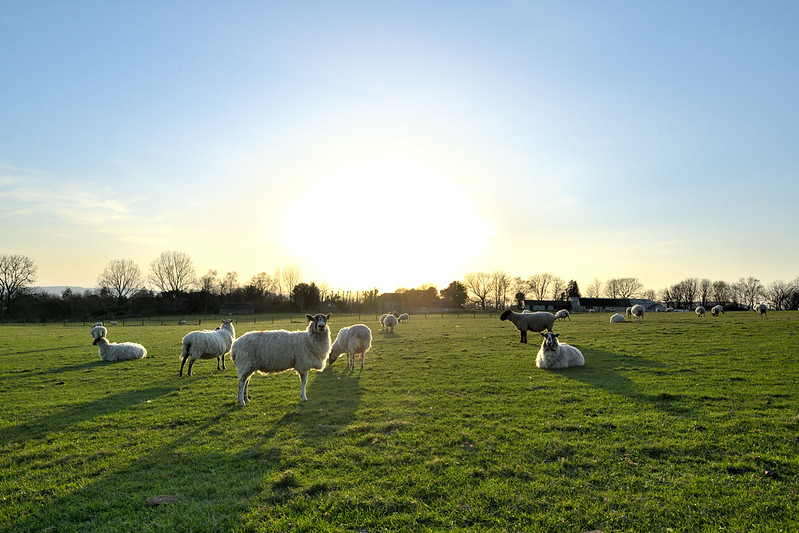
by Frances Valdes.
It’s midnight in the lambing field. In the darkness, we only see shapes; we notice the wind on our skin; slight noises assume importance. In the dark, our senses are heightened. In the dark, we are absorbed by the world around us. This world is two-dimensional, uncluttered by the nuance of color and depth. This is a world we are new to, but a world we have completely fallen in love with.
N, my partner, and I are helping a friend with lambing. We live on the edge of a city and have little knowledge of farm life. But he needed help, and we thought it might be fun. We packed up our campervan, drove to his farm and parked in the lambing field.
We are briefed, and then we’re off. I ride my friend’s bike and search the fields for signs of ewes in labor. When I find one, I call N. He arrives with a quad and trailer, and we take the newborn and mum back to the barn for post-birth care. N has been briefed to help with tricky births. I’m not sure I can, or to be truthful, want to. It’s messy, and I’m a two-shower-a-day, compulsive hand washer.
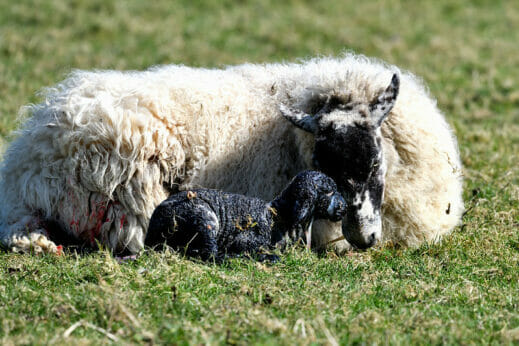
After a couple of days, the inevitable happens. I’m forced to deal with a problem. I come across a dead or dying lamb, I don’t know which. I don’t want to know. I don’t want to feel responsible for not saving it. N and our friend are elsewhere, so I need to help. I try my best. I tickle the lamb’s nose with straw. I try to push on its chest as if doing CPR. As a last resort, I pick it up and hold it upside down, trying to drain its nostrils. I feel impotent. Nothing’s working. I thought I saw it breathe, but I don’t know. Am I doing what I should; am I doing it right?
As I bend over the lamb, its mother puts her face to mine. We look at each other, eye to eye. Our faces are close, and I think I feel her anguish. I think I see her willing me to help. I feel a connection deep inside. Of course, it’s my imagination. Of course, she is an animal. Of course, what I feel is my own projection—isn’t it?
I fail her. By the time N arrives, there is no doubt the lamb is dead. The ewe starts to give birth to a second lamb. I feel guilty, although we have been assured that sometimes you can do nothing. This is a very binary world: Some lambs live and some die.
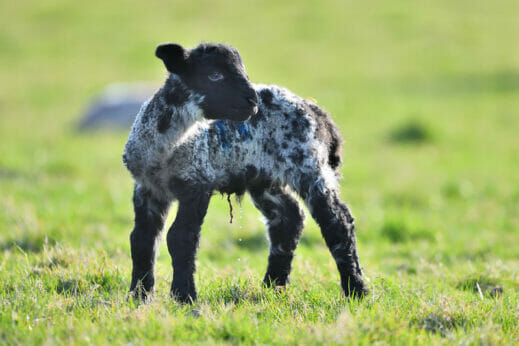
Most days, neighbors arrive to help move ewes and lambs into a different field. They, like us, never miss a chance to pick up a lamb, ostensibly to bring it into the field—but who can resist a cuddle? As evening approaches, we round up the pregnant ewes and move them into the same field. The neighbors go home. We are by ourselves. The field is ours. Darkness descends, bringing with it stillness and quiet. We are bursting with happiness at being alone in the starlight field. It is the night that becomes etched onto our psyche. It is the night that makes us want to return next year. It is the night that is so different from anything else we have experienced.
The countryside is changed by the sun’s absence. Our charges now rely on us to keep them safe. A ewe feels protected giving birth under a tree or bush, so hedgerows become markers. Shapes, unnoticed during the day, take on significance. Is that movement at the edge of the field a fox? Is that the wind causing a rustle in the bushes? Was that the call of an owl?
We listen for whispers in the wind to reveal secrets: the first tiny bleats of a newborn somewhere in the darkness, cries unheard in the cacophony of the day. We must find new life before the fox does. The night air is filled with first breaths and the danger of last ones. Nature enacts dramas not seen in a world of artificial light.
We drive the quad bike and trailer to where we think the bleats originated. At night, navigation is done using ears, not eyes. The noise of the engine and the rattle of the trailer are anathema to the natural melodies of the night. But the sheep are used to it.
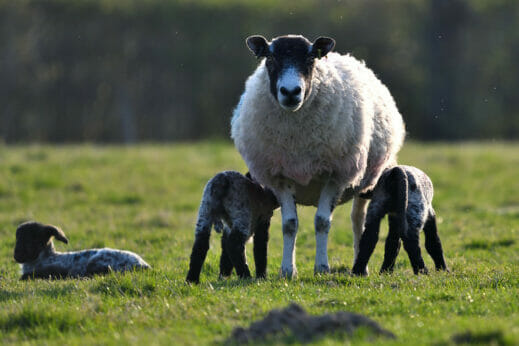
Our headlamps scan the field for the newborn. All around, pregnant ewes are sleeping or eating. They look up as we pass, the light catching iridescence in their eyes, giving them a spectral appearance in the dark. The light obliterates the night sky, stars are blinded, the moon becomes a disc hanging above the trees.
We see two glittering eyes close to the ground: a newborn lamb. The ewe is lying next to it. Her head is thrown back as she gives birth to a sibling. She is noiseless. We wait and watch. Beneath our feet, early evening dew is coalescing into ice crystals. We smell the cold air signaling a developing frost. The clear sky is blacker than any seen in towns, the moon brighter than we usually see, the stars more plentiful than in our back garden.
The world of the lambing field at night hypnotizes us. We feel subsumed into nature. We do not think of the past or what to do tomorrow. We just watch the ewe, the newborn and look at the sky. Waiting is part of the magic. We are connected with shepherds around the world and throughout the centuries. The parable of the Lost Sheep has new meaning. I think of the number of Christmases I have sung about shepherds “minding their flocks at night”. We try to name the constellations. I think of ancient shepherds who did the same.
The twin is born. We wait a short while for the mother to clean her offspring. But we need to interfere with nature; to ensure survival. I use the shepherd’s crook as I’ve been taught. It hooks under the little lamb’s back legs, and I drag it across the damp grass towards the nearby trailer. I do the same for its sibling. The crook seemed cruel when I was first shown how to use it. Now, I realize that it is the most efficient way to get the lambs. The lamb is still wet with after-birth; they are not easy to handle. In the beginning, this repulsed me; but now, it is just part of life.
The tiny lambs, less than ten minutes old, are now in the trailer and crying pitifully. It is hard not to anthropomorphize what I hear. They sound like human babies. We stand back and wait. We see the ewe’s distrust, her fear that we are taking her lambs. She runs around the trailer. She is desperate for her newborns, but also frightened of being trapped in the trailer.
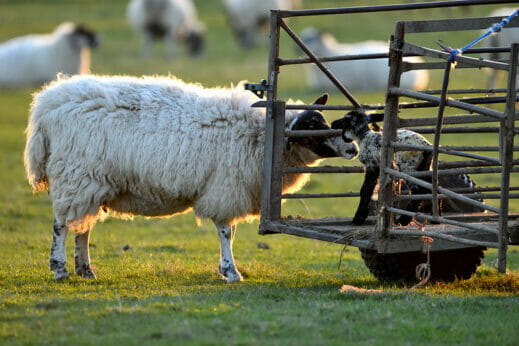
Finally, the ewe puts her front legs in the trailer. We wait a brief moment for her to feel more confident and then N pounces. He catches the ewe off-guard and pushes her into the trailer. Until this week, I had not realized how strong sheep were. Earlier, I caught a new mother and gripped her between my legs. I called N for help. By the time he looked up, I was face down on the ground, my glasses beside me. Just a little shake and she had freed herself.
I shut the trailer gate and use the crook to place the lambs in a small penned area at the front of the trailer. This ensures they can’t be trodden on in the short journey to the barn. The barn is lit and full of other ewes and lambs. The ewes are treated to a bucket of pellets. The lambs lie down. They are tired and oh so cute. We leave the light of the barn and return to the magic of the lambing field.
Across two fields, a half mile in the distance, orange lights illuminate another world—the world of a supermarket car park on the edge of the town. A world of clutter, din and manmade smells. A world where nature is an intrusion on man’s control. A world where there are twenty different types of breakfast cereals, thirty different types of tea and coffee. In the lambing field, there are two choices: breathe or don’t.
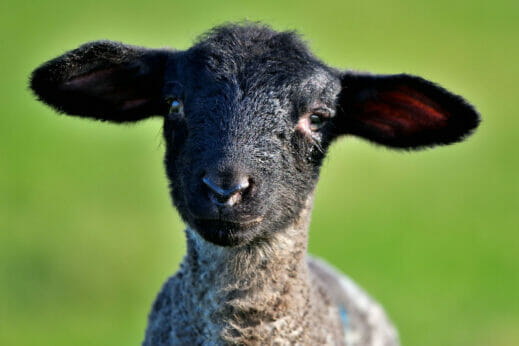
Our friend relieves us at 2 a.m. We are tired but sorry our night has ended. Normally, we are asleep at this time. Normally, our world is artificially lit at night. Normally, we seldom see the winter sky.
After a week of nighttime lambing, we return home. But I wake at midnight longing to be back in the field, in my special place. I long for darkness to throw light on different senses. I long for silence to reveal strange sounds. I long for nature’s simplicity to display the fullness of life.
Frances Valdes lives in Brighton, UK, with her husband and three cats. She is fairly new to writing, having had previous careers as a solicitor, and running her partner’s software business. Apart from enjoying writing, she also loves photography.
Follow us
This work is licensed under a Creative Commons Attribution-NoDerivatives 4.0 International License.
Want to republish a Modern Farmer story?
We are happy for Modern Farmer stories to be shared, and encourage you to republish our articles for your audience. When doing so, we ask that you follow these guidelines:
Please credit us and our writers
For the author byline, please use “Author Name, Modern Farmer.” At the top of our stories, if on the web, please include this text and link: “This story was originally published by Modern Farmer.”
Please make sure to include a link back to either our home page or the article URL.
At the bottom of the story, please include the following text:
“Modern Farmer is a nonprofit initiative dedicated to raising awareness and catalyzing action at the intersection of food, agriculture, and society. Read more at <link>Modern Farmer</link>.”
Use our widget
We’d like to be able to track our stories, so we ask that if you republish our content, you do so using our widget (located on the left hand side of the article). The HTML code has a built-in tracker that tells us the data and domain where the story was published, as well as view counts.
Check the image requirements
It’s your responsibility to confirm you're licensed to republish images in our articles. Some images, such as those from commercial providers, don't allow their images to be republished without permission or payment. Copyright terms are generally listed in the image caption and attribution. You are welcome to omit our images or substitute with your own. Charts and interactive graphics follow the same rules.
Don’t change too much. Or, ask us first.
Articles must be republished in their entirety. It’s okay to change references to time (“today” to “yesterday”) or location (“Iowa City, IA” to “here”). But please keep everything else the same.
If you feel strongly that a more material edit needs to be made, get in touch with us at [email protected]. We’re happy to discuss it with the original author, but we must have prior approval for changes before publication.
Special cases
Extracts. You may run the first few lines or paragraphs of the article and then say: “Read the full article at Modern Farmer” with a link back to the original article.
Quotes. You may quote authors provided you include a link back to the article URL.
Translations. These require writer approval. To inquire about translation of a Modern Farmer article, contact us at [email protected]
Signed consent / copyright release forms. These are not required, provided you are following these guidelines.
Print. Articles can be republished in print under these same rules, with the exception that you do not need to include the links.
Tag us
When sharing the story on social media, please tag us using the following: - Twitter (@ModFarm) - Facebook (@ModernFarmerMedia) - Instagram (@modfarm)
Use our content respectfully
Modern Farmer is a nonprofit and as such we share our content for free and in good faith in order to reach new audiences. Respectfully,
No selling ads against our stories. It’s okay to put our stories on pages with ads.
Don’t republish our material wholesale, or automatically; you need to select stories to be republished individually.
You have no rights to sell, license, syndicate, or otherwise represent yourself as the authorized owner of our material to any third parties. This means that you cannot actively publish or submit our work for syndication to third party platforms or apps like Apple News or Google News. We understand that publishers cannot fully control when certain third parties automatically summarize or crawl content from publishers’ own sites.
Keep in touch
We want to hear from you if you love Modern Farmer content, have a collaboration idea, or anything else to share. As a nonprofit outlet, we work in service of our community and are always open to comments, feedback, and ideas. Contact us at [email protected].by Frances Valdes, Modern Farmer
March 26, 2023
Modern Farmer Weekly
Solutions Hub
Innovations, ideas and inspiration. Actionable solutions for a resilient food system.
ExploreExplore other topics
Share With Us
We want to hear from Modern Farmer readers who have thoughtful commentary, actionable solutions, or helpful ideas to share.
SubmitNecessary cookies are absolutely essential for the website to function properly. This category only includes cookies that ensures basic functionalities and security features of the website. These cookies do not store any personal information.
Any cookies that may not be particularly necessary for the website to function and are used specifically to collect user personal data via analytics, ads, other embedded contents are termed as non-necessary cookies.
What a beautifully written article. Mrs. Valdes might be new to writing, but she clearly has a gift for it.
Very well presented. Every quote was awesome and thanks for sharing the content. Keep sharing and keep motivating others.
Beautiful article.
This is my first time pay a quick visit at here and i am really happy to read everthing at one place
Great information shared.. really enjoyed reading this post thank you author for sharing this post .. appreciated
Nice post. I learn something totally new and challenging on websites